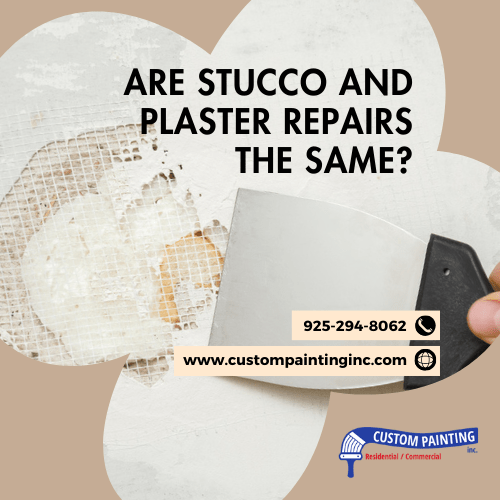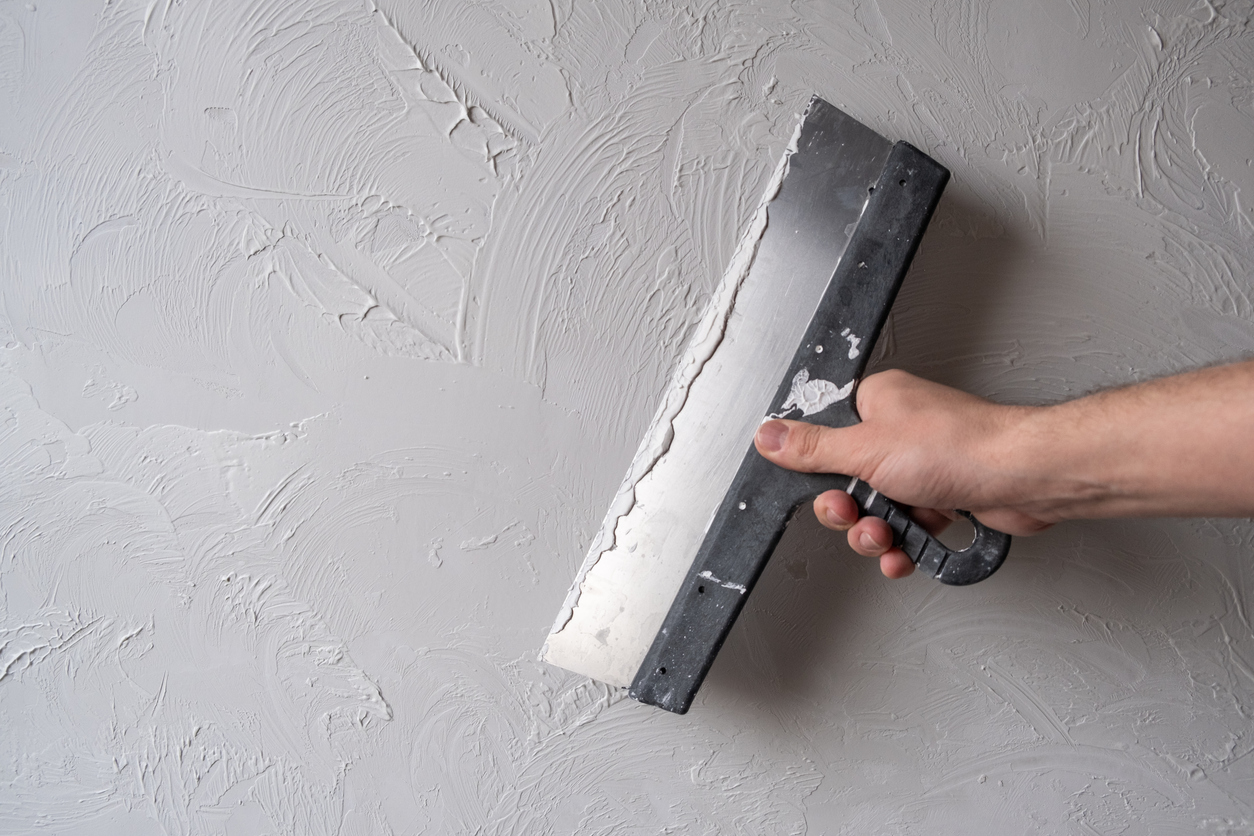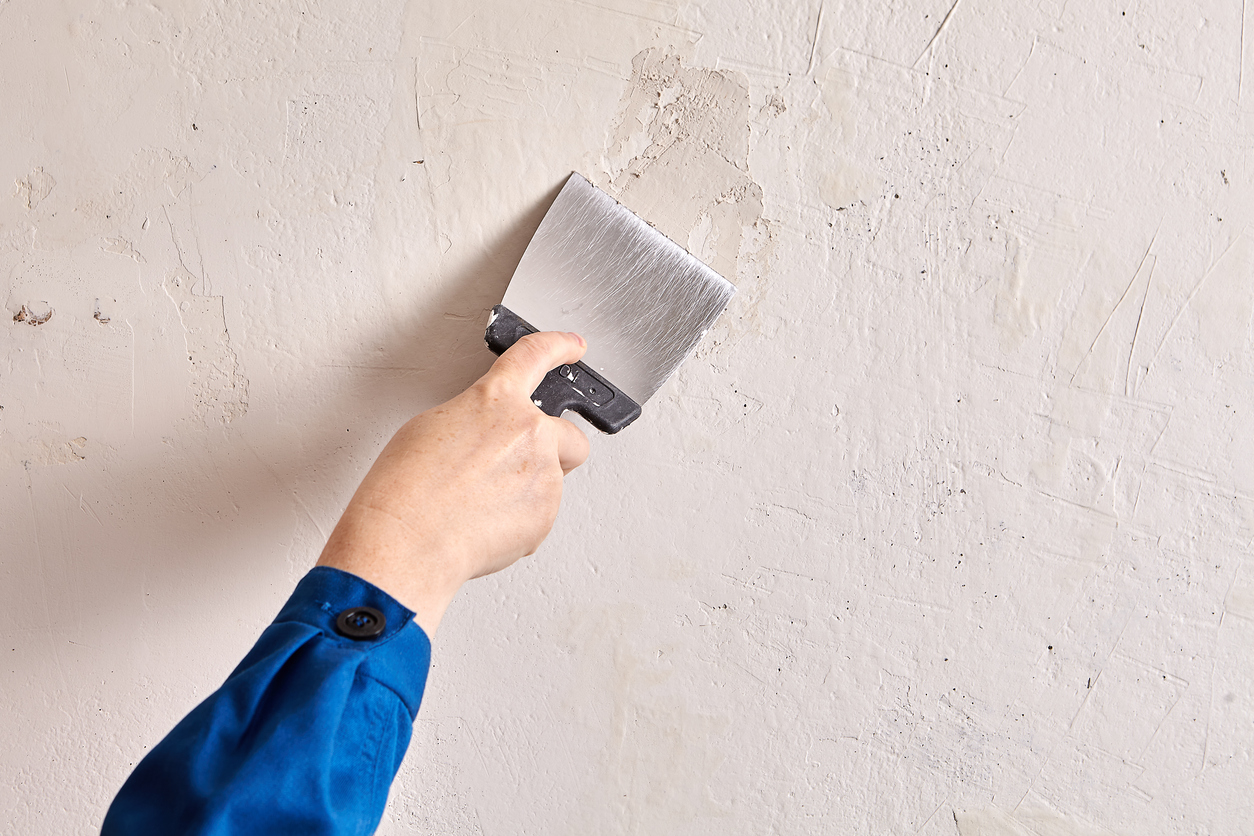Many people wonder if stucco and plaster repairs are the same when it comes to Concord area home repairs. While both materials are used for wall finishes, they have different properties and require distinct repair techniques. This article will examine the characteristics of stucco and plaster and how their repair processes differ.
What is Stucco?
Stucco is a type of plaster used for coating walls and ceilings. It is made from cement, sand, lime, and water. This mixture creates a durable and weather-resistant surface.
Stucco is commonly used on buildings’ exterior surfaces in the Benicia, CA area. It provides a strong and attractive finish that can withstand harsh weather conditions. Homes and commercial buildings often have stucco exteriors due to its durability and aesthetic appeal.
There are two main stucco types: traditional and synthetic. Traditional stucco is made from natural materials like cement and lime and is applied in several layers to create a thick and strong finish. Synthetic stucco, known as EIFS (Exterior Insulation and Finish Systems), uses synthetic materials and includes a foam insulation board. This type is lighter and more flexible but less durable than traditional stucco.
What is Plaster?
Plaster is used mainly for coating walls and ceilings. It is made from a mixture of water and materials like lime, gypsum, or cement. When it dries, this combination creates a smooth and hard surface.
Plaster is typically used on the interior surfaces of buildings. It offers a smooth and durable finish that is ideal for painting or wallpapering. Due to its aesthetic appeal and versatility, plaster is often found in homes and historical buildings.
There are different types of plaster. Lime plaster is made from a mixture of lime and sand. It is breathable and flexible, making it ideal for older buildings. Gypsum plaster is made from gypsum and offers a quick drying time. It is commonly used in modern construction for its ease of application. Cement-based plaster is made from cement and sand. It is very durable and often used in areas that need extra strength.
Key Differences Between Stucco and Plaster
Stucco and plaster are both used in building construction in the Pleasant Hill, CA area, but they have different properties and uses. Read below to learn more about the key differences between them.
Composition
Stucco is made from cement, sand, lime, and water. Plaster, on the other hand, is made from lime, gypsum, or cement mixed with water. This difference in materials gives each a unique texture and durability.
Common Uses
Stucco is typically used on exterior surfaces. It is durable and weather-resistant, making it ideal for building facades. Plaster is commonly used on interior walls and ceilings, providing a good base for paint or wallpaper.
Application
Stucco is applied in several layers to create a thick, strong finish. Plaster is usually applied in a thinner coat, creating a fine finish suitable for detailed work.
Types
Stucco comes in traditional and synthetic forms. Traditional stucco is made from natural materials, while synthetic stucco, also known as EIFS, includes foam insulation. Plaster types include lime plaster, gypsum plaster, and cement-based plaster. Each type has specific uses and benefits.
Durability
Stucco is more durable and weather-resistant than plaster. It can withstand outdoor elements better, making it suitable for exterior use. Plaster, while durable, is best suited for indoor applications because it is not exposed to harsh weather.
Repairing Stucco
Stucco is a durable and popular exterior finish for buildings, but it can develop problems over time. Here’s how to address common stucco issues.
Common Stucco Problems
Stucco can develop cracks due to settling or temperature changes. Chipping may occur from impact or wear, and water damage can cause stains or mold if stucco absorbs moisture.
Tools and Materials Needed for Stucco Repair
For stucco repair, you will need a trowel, a hawk, a putty knife, a wire brush, a mixing bucket, and a stucco mix. A bonding agent, paint, and primer might also be required for finishing.
Step-by-Step Guide to Repairing Stucco
There are steps that you can follow to repair stucco properly. Below is a list of those steps:
- Cleaning the Damaged Area: Begin by cleaning the damaged area with a wire brush. Remove any loose or broken pieces to ensure a clean surface free of debris and dust.
- Mixing and Applying Stucco: Mix the stucco according to the package instructions. Applying a bonding agent to the damaged area may be necessary. Use a trowel to spread the stucco mix over the area, pressing it into cracks and smoothing it out.
- Finishing and Curing: Allow the stucco to dry slightly before using a finishing tool to texture the surface to match the surrounding area. Let the stucco cure completely, which can take several days. Once dry, paint or prime the repaired area to blend it with the rest of the wall.
Repairing Plaster
Plaster walls can develop issues over time that need fixing to maintain their appearance and integrity. Here’s how to address common plaster problems and repair them effectively.
Common Plaster Problems
Plaster can develop cracks due to settling or temperature changes. Holes may appear from nails or accidental damage. Peeling can occur if the plaster loses its bond with the underlying surface.
Tools and Materials Needed for Plaster Repair
To repair plaster, you will need a putty knife, a plaster trowel, sandpaper, a mixing bucket, patching plaster, and primer. A bonding agent might also be necessary for some repairs.
Step-by-Step Guide to Repairing Plaster
Much like stucco, there are certain steps that should be followed when repairing plaster.
- Preparing the Surface: Start by cleaning the damaged area. Remove any loose plaster and debris. For peeling plaster, gently scrape off the peeling sections until you reach a stable area.
- Applying Patching Material: Mix the patching plaster according to the instructions. Apply a bonding agent to the area if needed. Use a putty knife or trowel to fill cracks and holes with the plaster mix. Press the material firmly into the damaged area.
- Smoothing and Finishing: Smooth the patched area with a trowel, ensuring it is level with the surrounding surface. Allow the plaster to dry completely. Sand the area lightly to remove any rough spots. Finish by applying primer and paint to match the rest of the wall.
Comparing Repair Processes
When comparing the repair processes for stucco and plaster, there are both similarities and differences to consider.
Similarities in Repair Techniques
Both stucco and plaster repairs involve cleaning the damaged area, applying a patching material, and finishing the surface to blend with the surrounding area. The basic steps of preparation, application, and finishing are similar for both materials.
Differences in Repair Materials and Tools
Stucco repairs require materials like cement, sand, lime, and water, while plaster repairs often use lime, gypsum, or cement mixed with water. The tools can also differ: stucco repairs typically use a trowel, hawk, and putty knife, while plaster repairs might need a plaster trowel, putty knife, and sandpaper.
Considerations for DIY vs. Professional Repairs
Deciding whether to do repairs yourself or hire a Walnut Creek area professional often depends on the extent of the damage and your skill level. Small cracks and holes can often be fixed with DIY methods, but larger or more complex issues might require professional expertise. Professionals bring experience and the right tools for a durable and aesthetically pleasing repair.
When to Call a Professional
Sometimes, repairs are too complex or extensive to handle on your own. Here are some reasons to call a professional for stucco and plaster repairs for Lafayette and Antioch are homes:
- Large Cracks or Holes: If the damage covers a large area or penetrates deeply, it requires professional attention.
- Structural Issues: Damage indicating problems with the structure should be handled by a professional to ensure safety.
- Persistent Water Damage: Ongoing water damage or mold growth needs expert assessment and repair.
- Quality Workmanship: Professionals have the skills and experience to do the job right.
- Proper Tools and Materials: Professionals use the right tools and high-quality materials, making repairs last longer.
- Time and Effort: Hiring a professional saves you time and effort, allowing you to focus on other tasks.
Conclusion
Stucco and plaster repairs, while similar in some ways, require different materials and techniques. Knowing the differences can help you decide which method is right for your home.
For professional stucco and plaster repair services, contact Custom Painting, Inc. Call us at 925-686-0903 or fill out our Contact Form.




